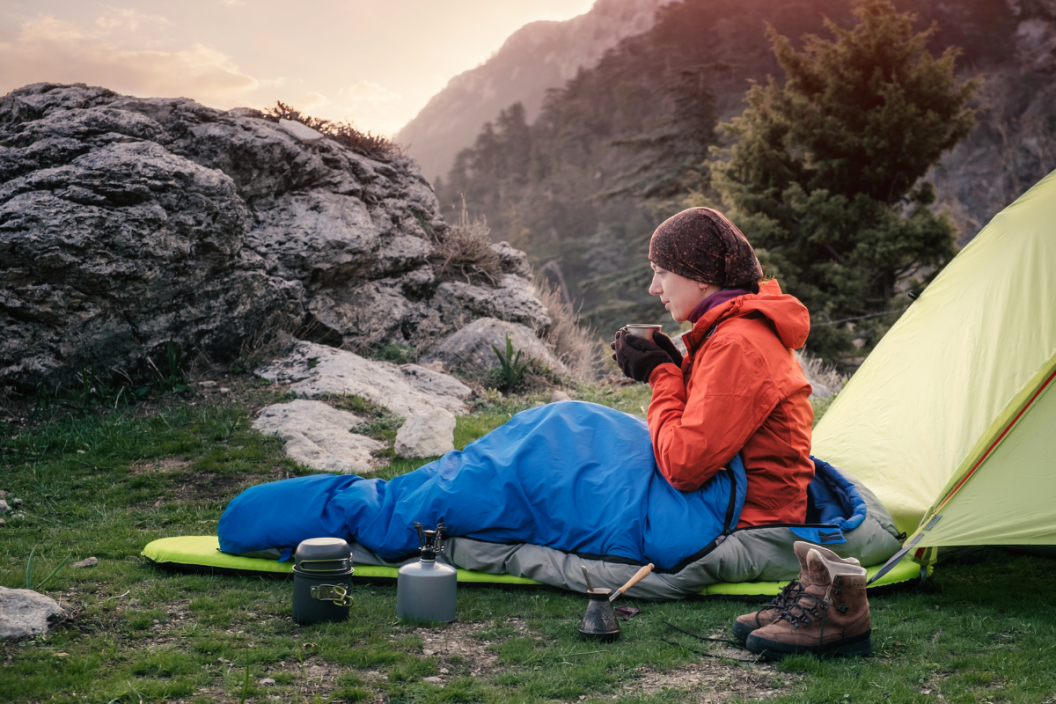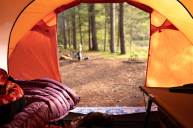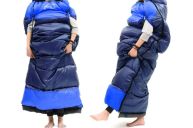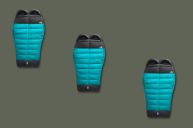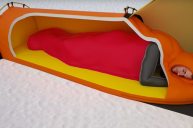Whether you're backpacking through backcountry, or one of the many campers who prefers the conveniences of car camping, bringing the right sleeping bag is the most important thing you can do to ensure a great trip. Getting a good night's sleep can make or break any outdoor retreat, so choosing the right bag should come before a lot of other things on your list.
While there's no guarantee you'll pick the best sleeping bag the first time around, there are some things you can consider to guide your purchase. The information below will give you plenty to mull over when preparing to buy your next sleeping bag.
How Warm of a Sleeping Bag Do I Need?
https://www.instagram.com/p/B0Q-7KjJ1aD/
Understanding sleeping bag temperature ratings is essential to insulating yourself against the elements. While versatile three-season bags are a great choice for casual campers since they cover the widest temperature range, they can still fall short.
Even though many bags are scientifically tested and rated using an ISO measure and comfort ratings, these metrics can be a bit abstract and don't necessarily tell consumers what they really need to know. Generally speaking, the lower the temperature rating, the warmer the bag will be. The bag you choose should depend not only on the weather you plan to camp in, but also whether or not you're more of a warm or cold sleeper.
We're sorry to say that there's no silver bullet sleeping bag that'll slay every camping scenario. For better or worse, it takes some trial and error to decide how warm of a sleeping bag you need. Sticking to an affordable three-season bag is a great way to start. Beyond that, it's always wise to check with a number of relevant authorities and experienced individuals before pulling the trigger.
Whether you're asking an REI associate, watching a YouTube video, or reading reviews on Amazon, make sure to do your research before settling on a sleeping bag.
Down vs. Synthetic Sleeping Bags
https://www.instagram.com/p/COlRPIzAIGX/
RELATED: The Step-by-Step Guide to Pitching a Tent (The Right Way)
Both synthetic insulation and down insulation have their own ups and downs when it comes to bag designs. Synthetic fills often don't breathe or pack as well as down, but they're easier to keep dry and are usually hypoallergenic. Meanwhile, down delivers more warmth with less weight, making it a good choice for experienced backpackers and/or those camping in dry areas.
But please note that even if you aren't camping in wet conditions, dew, condensation, and other unforeseen circumstances can leave you and your bag uncomfortably damp. No matter what kind of sleeping bag you choose, you'll be better off its shell fabrics are made with water-resistant materials. Beyond that, it's often a good idea to coat your bag with a water repellent spray.
Mummy Sleeping Bags Vs. Rectangular Sleeping Bags
https://www.instagram.com/p/8PKZa4lw7L/
Although sleeping bag shape mostly comes down to a matter of preference, there're a few things to take into account.
Mummy bags are shaped sort of like a sarcophagus, hence the name. They are designed with features like draft collars that help keep warm air in, and are a great choice if you like to sleep on your back with your legs together.
However, if you sleep belly down and/or like to have your legs splayed out, you'll definitely want to stick to rectangular bags. These models have wider foot boxes, meaning you won't lose your mind in the middle of the night when you aren't able to kick or separate your legs. (Believe us. We right from experience!)
Packability
https://www.instagram.com/p/B-X_y-LgrHz/
Backpacking trips and camping trips often require very different gear. While the sort of ultralight gear backpackers use can work equally well for simple car camping trips, their bulkier cousins are often a no-go when the shoe's on the other foot.
Those looking for a backpacking sleeping bag should stick to the lightest options. These are usually also the easiest to compress and shove into stuff sacks.
If you're a car camper, you've got a lot more wiggle room and can even choose from convenient novelties like double bags.
Develop a Whole Sleep System
https://www.instagram.com/p/CKoq4-6lMIx/
Getting a good sleeping bag is only part of planning the perfect camping sleep system. In addition to the appropriate bag, you'll also want to some sort of sleeping pad. Not only do pads offer comfort in rugged terrain, they also help insulate you from below.
Sleeping bag liners are also a good buy. In addition to offering a versatile layer for temperature changes, they also keep the inside of your sleeping bag clean and free of whatever you've been rolling around in all day.
Got any tips or tricks when it comes to choosing the best sleeping bag? Let the good people know on our Wide Open Roads Facebook!
